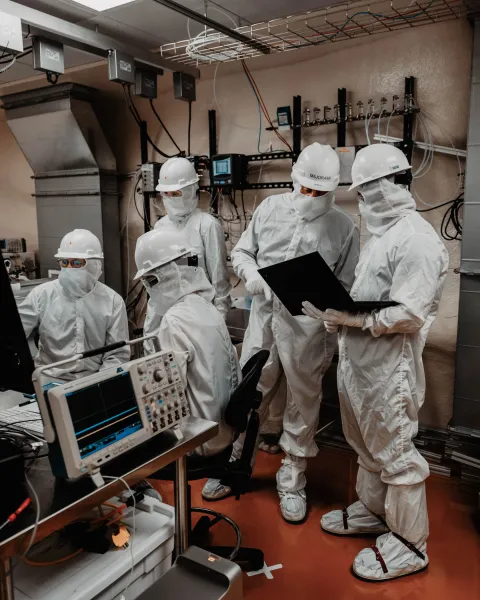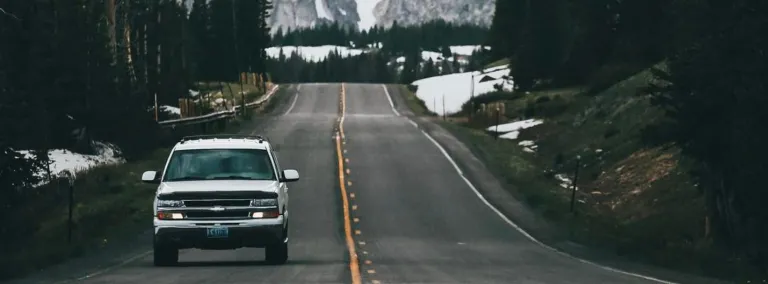Road tripping with a germanium detector
Dodging cosmic rays, researchers make a cross-country road trip to from Tennessee to South Dakota
In the grey hours of a September morning, Anna Reine and Morgan Clark turned their Toyota Forerunner onto the interstate. Nineties pop hits were queued, a bag of peanut butter pretzels was nestled in the console and two ultrahigh-purity germanium detectors sat in the hatchback. Reine and Clark, University of North Carolina graduate students, drove 30 hours over the next three days, opting out of scenic routes and zipping past dozens of tourist traps that litter the Midwest: on the road, their cargo was vulnerable.
Reine and Clark had been tasked with shuttling two detectors from Oak Ridge National Laboratory in Tennessee to Sanford Underground Research Facility (Sanford Lab) in Lead, South Dakota. There, the detectors would be characterized before use in LEGEND-200, a next-generation neutrinoless double-beta decay experiment.
These detectors are enriched with an isotope of germanium—germanium-76 (76Ge)—and are incredibly sensitive.
“The advantage of 76Ge detectors compared to other double-beta decay experiments is that it has the best intrinsic resolution,” explained John Wilkerson, U.S. principal investigator for LEGEND-200. “This makes it ideally suited to observe neutrinoless double-beta decay, a theoretical and rare physics event.”
During transport, these detectors were susceptible to "cosmogenic activation."
Earth is constantly showered by a dense torrent of cosmic rays from the sun. When cosmic rays barrage an otherwise stable isotope, they cause cosmogenic activation. While this reaction is harmless to the graduate students humming along to Whitney Houston in the front seat, it could be ruinous to the germanium detectors they were transporting.
“Cosmogenic activation could result in long-lived, unstable isotopes, which could decay over the course of the experiment; this would result in higher backgrounds for LEGEND-200,” said Reine.
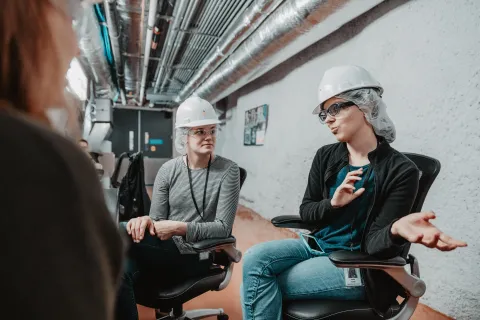
Before the cross-country road trip began, the detectors were stored among stalactites in a cave at the Historic Cherokee Caverns in Oak Ridge, Tennessee. To limit the detectors’ exposure to cosmic rays during transport, the researchers traveled the most direct route possible.
“We couldn’t make a lot of stops,” said Clark. “Since we didn’t want these detectors to be above ground any longer than was necessary, we had it all mapped out.” And because higher elevations mean denser cosmic radiation, driving was favored over flying.
When Clark and Reine arrived at Sanford Lab, researchers ushered them directly to the 4850 Level, where nearly a mile of rock overburden shields the detectors from cosmic rays.
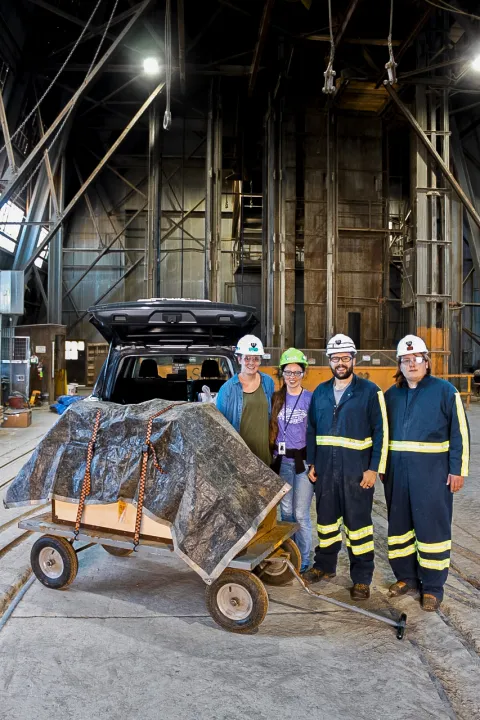
“These detectors have had quite the journey, and it’s not over yet,” said Clark.
A cleanroom on Sanford Lab’s 4850 Level will be a temporary home to these and 10 more detectors arriving over the next few months. There, protected from cosmic rays and dust, the detectors will be scanned and characterized. The tests will help researchers get to know these detectors: how accurate are they? What is their active mass? How time-sensitive are they?
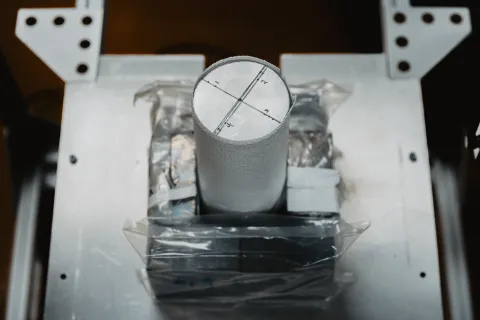
All this information will prove invaluable when they are installed in LEGEND-200, the next generation neutrinoless double-beta decay experiment at Gran Sasso National Laboratory (LNGS) in Italy. While the experiment will utilize 200 kilograms of germanium, the detectors only weigh one to two kilograms apiece. Researchers at Sanford Lab and LNGS are testing every detector to fully-understand how each one will impact the experiment.
Later this year, two germanium detectors will be inserted in the Majorana Demonstrator (Majorana) at Sanford Lab. Majorana, a predecessor to LEGEND-200 known for its extremely minimal backgrounds, began taking data in 2016.
“Majorana is the lowest background environment we have,” said Wilkerson, who is also the principal investigator for Majorana. “By installing them inside, we can further characterize the detectors, while also increasing our total physics data taken before Majorana is decommissioned.” Majorana will also provide ultra-pure copper and 35 enriched germanium detectors to LEGEND-200.
When LEGEND-200 is built, the detectors will be packed in a special cargo container and shipped across the Atlantic Ocean. Finally, they will arrive at their final destination: 4,500 feet beneath Gran Sasso mountain in Italy.
